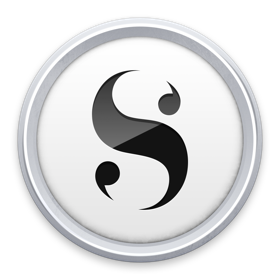Go to the action menu (the gear wheel) at the foot of the binder and select Change Icon. From there, scroll all the way down until you reach Manage Icons. A window will open: You’ll want to add your icons in Icons in Project Package. One of the great things about Scrivener is its file based approach. Instead of one huge document, it uses a series of document folders and files that can be linked in various ways. And for those visual types mourning colored Post-its in this electronic age, you can even assign icons and colors. Sadly, the stock icons in Scrivener in my opinion.
Before I settle down to write I like to make my workspace as comfortable as possible. In the physical world, my desk is positioned where I have a view of the front yard and I can see Lola the Lab sitting a few feet away from the front porch or on the hill with the big pine tree. On my desk, I have my reference books within reach, and the laptop sits on a tilted platform.
Because I use Scrivener for all my writing projects, I’ve customized how it looks. As I mentioned in The Story Behind the Tutorials, I created a project named the File Cabinet where all my projects are filed within this one big project. Works great. No more digging around the Finder or Windows Explorer for those multiple files. In a future tutorial, I’ll show how you can change color-code folders, import icons, change the icons, but for now this tutorial will address some of the very basics.
I’ve heard from numerous users that they find the workspace distracting and too busy. What many people don’t realize is the Binder can be hidden as well as the inspector. Just click on the Binder icon on the toolbar, and voila! It’s gone. Ditto with the Inspector.
So now you’re left with the Editor and you can write without any distraction. But what if you want the expansive bright white space to be a more soothing color?
The Editor with the Binder and Inspector Hidden
For Mac users, go to the menu bar and click on Scrivener, the drop menu will appear and hit Preferences (Cmd-,); Windows users go to Tools, Options (F12).

A window will open to General preferences. You’ll notice the tabs that correspond to all the different features.
Scrivener How To
Scrivener Preferences: General
To change the color of the Editor click the Appearance icon and at the bottom, you’ll see Customizable Colors.
The list provides a number of Scrivener features that can be changed. For this example, we’ll focus on the Editor. From the list on the left, select Editor->Text Background and click the small window pane that indicates the color. A dialog box with all the color swatches will appear. From there you can select the color that you like best for your writing space.
Scrivener How To Use

Changing the Editor’s Text Background

If don’t want a color, but a texture (you can actually download 149 textures from http://www.demilked.com/free-paper-textures-backgrounds). Hit Choose Texture and select the one you like that’s saved in your files.
Above Customizable Colors, you can change the fonts of the Binder, the Outliner title, and the Synopsis. Folders titles and document groups can be bolded in the Binder, as well as titles in the Outliner.
At the very top, you can add lines to the document and project notes feature found in the Inspector, add both horizontal and vertical grid lines to the Outliner, and select the source list (this is the highlight tool used in the binder when selecting a document. When the source list style is selected, the color is the same as in the Finder—an aqua color or the theme used in Windows, when it’s unchecked, it’s a silvery color).
Next time, we explore the Binder, Scrivener’s file management system.
